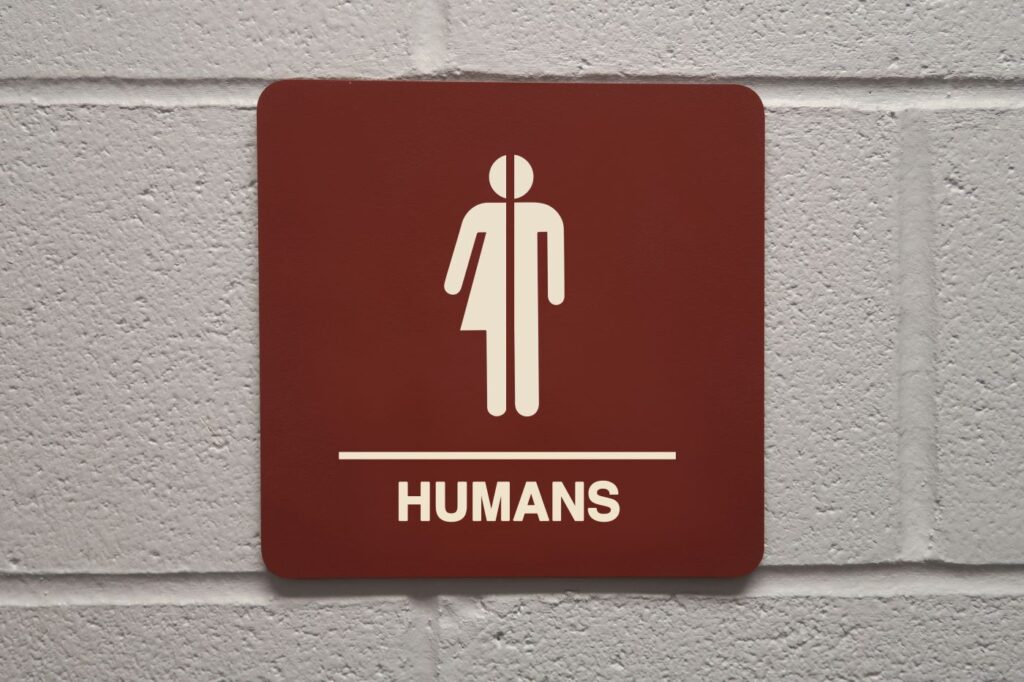It is not an overstatement to say that the question of sexual difference, and its counter-concept, gender, is among the most contentiously debated today. We should think about why the topic inspires such vitriol, but one possible reason is that everyone has skin in the game: to be human is to be either a man or a woman, and therefore, being human requires us to think about what it means to be a man or a woman. Every bit of ourselves is expressed either as male or female, and therefore, the questions surrounding sexual difference touch on—or perhaps coincide with—questions of our humanity.
One of the consequences of this, however, has been an absolute morass of once unquestioned terms. On the face of it, this seems silly: there are men and there are women, and we all bring something different to the table when it comes to being human. It shouldn’t be that complicated.
And yet those who pay even the least attention to this discourse (and even perhaps those who wish to pay no attention) know that it is complicated. Part of the reason is that sexual difference is more nuanced than we have previously thought it to be, but another part—probably the larger part—is that the terms of the discourse are intentionally confused and obfuscated by gender ideologues (those who contend that gender is different from sex). Gender ideologues want us to think that sex and gender are much more complicated than most of us can understand, and that the evidence we collect from the world with our own senses (as well as that of the billions of humans who preceded us in history) is not reliable.
Alex Byrne’s Trouble With Gender: Sex Facts, Gender Fictions (TWG) is a mostly successful attempt to cut through the intentional discomposition of the terms of discourse about sexual difference. In an extremely well-researched manner, Byrne addresses many of the “fictions” gender ideologues use to make their arguments. One example: many note that 1.7 percent of the population is intersex, which would mean one out of almost every fifty people have some combination of both male and female genitalia. As Byrne demonstrates in chapter three, that number was made up by Anne Fausto-Sterling in her article “How sexually dimorphic are we?” and that the number is probably 0.015 percent. Such research and clarification alone make the book worth reading.
Start your day with Public Discourse
Sign up and get our daily essays sent straight to your inbox.As Byrne himself writes in both the Introduction and Coda, TWG is a book about sex—not sexual intercourse, but human beings as sexually differentiated creatures. Byrne’s thesis is that “using ‘gender’ to mean anything other than sex is to obscure important issues for no good reason.” In making his argument, Byrne provides a great deal of evidence from biology, history, sociology, and psychology. He carefully sifts through a great deal of nonsense that passes for research in the fairly new subject of “gender studies,” exposing the gender ideologues’ faulty logic.
On this score, Judith Butler is Byrne’s main target: the title of the book is clearly aimed at Butler’s Gender Trouble, first published in 1990 and largely understood to be a foundational text for gender studies. There, Butler expands on Simone de Beauvoir’s famous proclamation from The Second Sex that “one is not born, but rather becomes, a woman,” and concludes that sex and gender are both socially constructed. Byrne criticizes Butler mostly on grounds of how unclear her writing is rather than any full examination of her first principles. Lack of clarity and precision seem, for Byrne, to be the deepest sin a thinker can commit.
Byrne explores cases of individuals to whom gender ideologues often point to demonstrate that “sex is a vast, infinitely malleable continuum.” These are generally people who have some sort of chromosomal or hormonal abnormality that leads to their being not immediately identifiable as their natal sex, and are thus raised by their parents as the opposite sex (the author makes it clear early in the book that such abnormalities do not result in a “disordered person: indeed, he or she may be the most wonderful human being you could ever hope to meet”). Gender ideologues often appeal to these incredibly rare cases to “prove” their proposition that sex is socially constructed. But Byrne explains that they do not prove what they claim, even on their own terms. Byrne concludes: “The orthodox conception of gender identity does no explanatory work at all. As popularly conceived, gender identity is a myth.”
He also explores the phenomenon of what he (rightly) calls transsexualism. Here, Byrne demonstrates that men who wish to be women are a very different phenomenon from women who wish to be men. The former category is often driven by autogynephilia—a condition in which men are sexually aroused by thinking of themselves as women (and, most often, as having sex as a woman). Byrne here also handily dismantles the oft-repeated claim that Ray Blanchard’s diagnosis (and neologism) of autogynephilia for these men is pseudoscience. Byrne doesn’t delve quite as deeply into the phenomenon of women who wish to be men, but he does point out that the scant research available shows that women who wish to be men are not motivated by sexual arousal at thinking of themselves as men and have other reasons for wanting to live as the opposite sex (for example, accessing careers unavailable to them because they are women). All of this furthers the point that even here, in the phenomenon of transsexualism, sex is binary: “Males are the more extreme sex in many respects, and transsexuality is no exception.”
The book does have some shortcomings. Byrne uses so-called “preferred pronouns” throughout the book. This is rather curious for someone who proclaims on the first page of Chapter Two that “words matter” and spends an entire book arguing not only that sexual differentiation is real, but that it is binary and immutable. Additionally, Byrne seems unsympathetic to gender-critical activists and feminists who refuse to abide by the pronoun regime, also pejoratively known as TERFs, or trans-exclusive radical feminists. He brings up Kellie-Jay Keen in particular, who came to prominence when she sponsored “a large billboard displaying, in striking white type on a black background woman wƱmən noun adult human female” in 2018. Byrne writes: “At the very least the billboard conveyed the message that trans women are not women; whatever the truth of the matter, one could understand how shouting it from the side of a building might be in poor taste.” Here I simply repeat Byrne’s earlier maxim: “Words matter.”
Second, there is a substantial deficit in the book, which is the absence of the voices of philosophers from the radical feminist tradition. Byrne would perhaps object that his intent was not to engage with radical feminist philosophy, and thus this is an unfair criticism. This objection would be valid except that feminist philosophy and philosophers are blamed throughout the book for not preventing—and indeed embracing—gender ideology, and not holding it up to the scrutiny proper to the practice of philosophy. This is certainly a valid critique of many feminist philosophers, but to level such a critique and not present other voices who have done exactly such scrutiny seems disingenuous. Janice Raymond, author of The Transsexual Empire, is a glaring omission, as is the work of Germaine Greer, Adrienne Rich, and Andrea Dworkin, to name just a few.
The larger issue, however, is that Byrne does not acknowledge the incredibly high stakes of the gender discourse because he does not seem to recognize the question at its root: the meaning of human being. Is to be human to take part in a reality bigger than oneself? Another way to put this: does reality have an order in which we must all participate? Or, do we deny that there is any such order, which means that we can treat anything as we like, including our own bodies and therefore our own humanity?
Byrne relies heavily on arguments from biology to make his points, but if the gender ideologues are correct, then biology is meaningless and we need pay it no attention whatsoever. Biology is only important if we recognize the prior metaphysical fact that reality has an order, of which biology is expressive. TWG treats the sex/gender discourse as if the terms are just confused and need some clarification—this is true, but there is more to it than that. There is a reason temperatures run so high in these debates: what it means to be human is the question that binds all of them, and this goes unrecognized in TWG.
And because women are the only members of the human species that bear children—that is to say, because women bear in themselves the future of humanity—if there is an attempt to change, foundationally and fundamentally, what it means to be human, the attempt will manifest first and most visibly in women. Byrne writes that “what is a woman?” is “the main question” of TWG’s third chapter, and as anyone who pays attention to this discourse knows, that question may be the most volatile question to ask in our current moment. Why doesn’t it occur to Byrne to ask why the definition of “woman” is in contention rather than “man?” Kellie-Jay Keen knows why, as well as the radical feminist philosophers I mentioned above: because the very fabric of who and what we are is at stake. Until everyone, including Byrne, sees that the point of gender ideology is to change our understanding of human being, our arguments and clarifications will ultimately be impotent.
Image by John and licensed via Adobe Stock.














